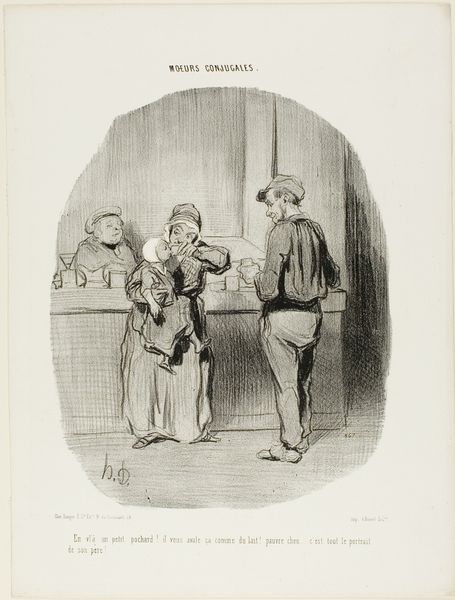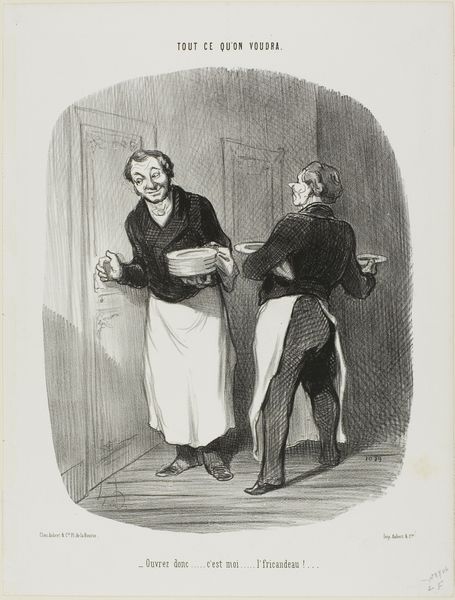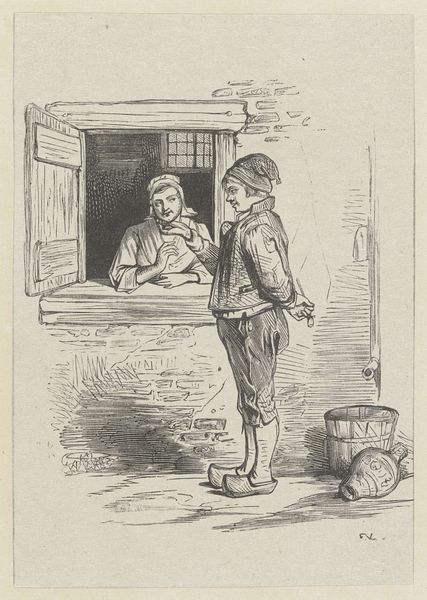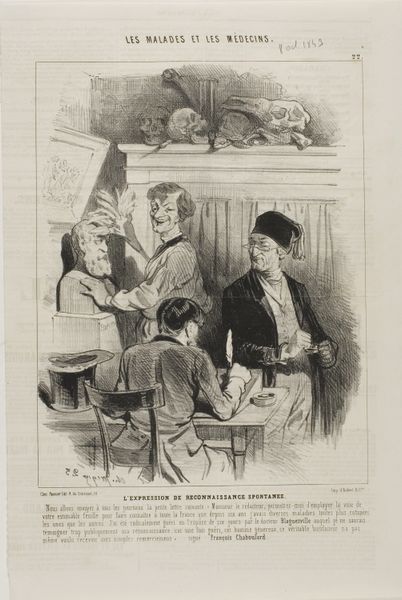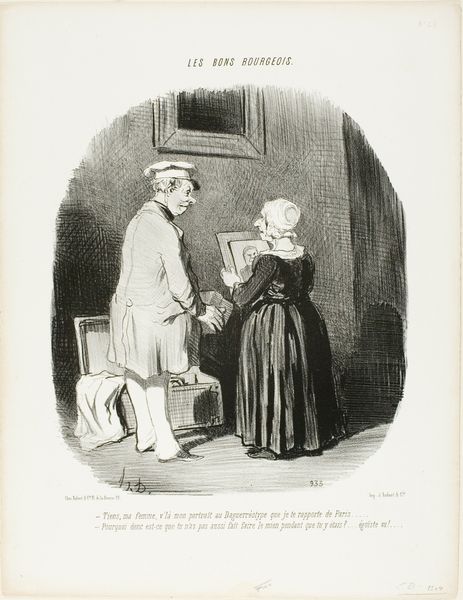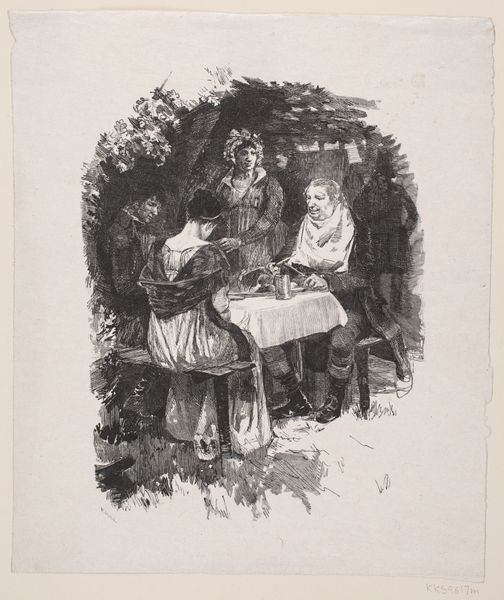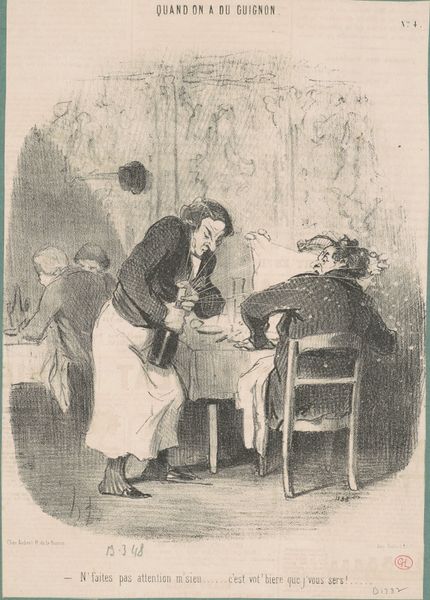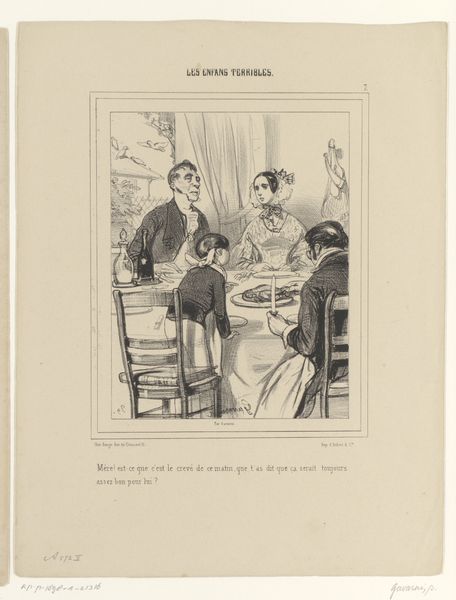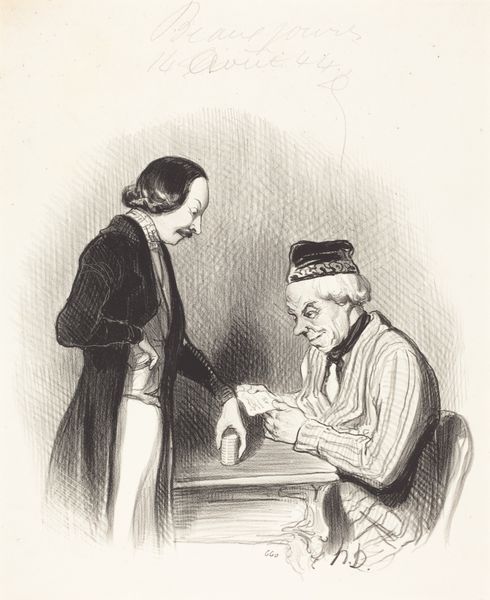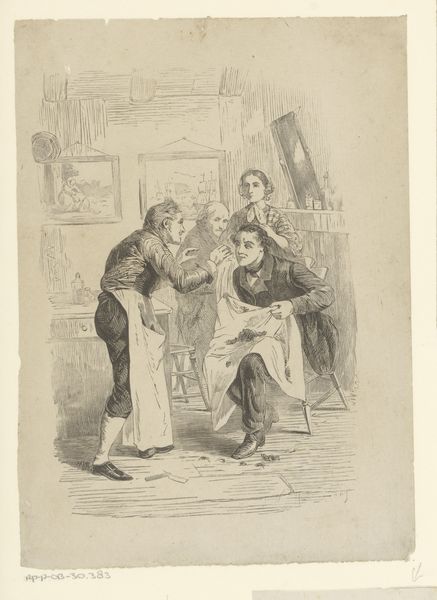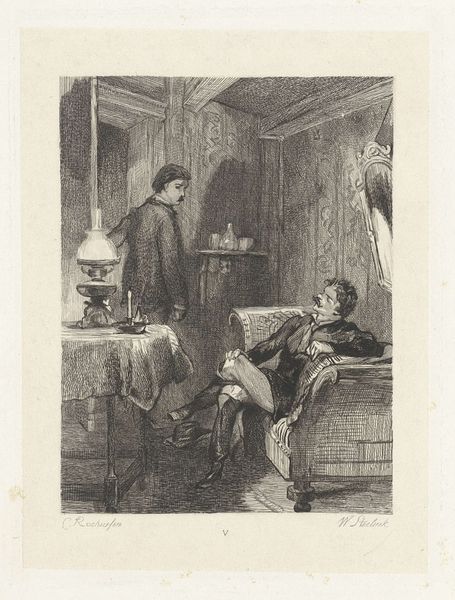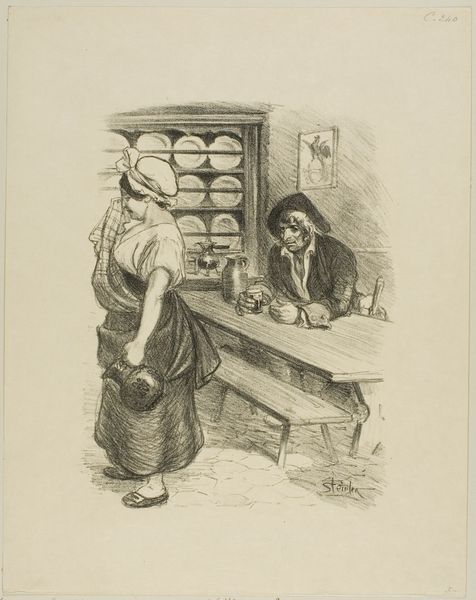
The Jayotype. "- Mr. Jay: The gentleman is married? - The gentleman: Certainly, but how the devil did you know that? - Mr. Jay: Oh, its that this instrument is perfect, that no curve of the head, no bump on the forehead can escape it. - The gentleman: How ingenious!," plate 60 from Moeurs Conjugales 1842
0:00
0:00
drawing, lithograph, print, paper, pen
#
portrait
#
drawing
#
lithograph
# print
#
paper
#
romanticism
#
france
#
pen
#
genre-painting
Dimensions: 251 × 223 mm (image); 324 × 260 mm (sheet)
Copyright: Public Domain
Editor: Here we have Honoré Daumier's 1842 lithograph, "The Jayotype," which is plate 60 from Moeurs Conjugales. It's on paper and done with pen and ink. It’s interesting how it depicts this technological encounter, a salesman showcasing his "instrument." What do you see when you look at this piece? Curator: Well, immediately I think about the materials themselves. Daumier used lithography, a process allowing for mass production of images. That accessibility democratized art, taking it from elite salons to the broader public through newspapers and satirical journals. Consider how Daumier, through his labor, critiqued the bourgeoisie while simultaneously relying on their consumption of his prints for his livelihood. Do you notice how this tension plays out in the image itself? Editor: You mean how the very subject of the lithograph, the married gentleman, is of the bourgeoisie? It seems the process and content are intertwined, inseparable from each other. Curator: Precisely! Think about the paper itself - cheap, readily available, contrasting with the fine art paper of, say, an etching. It’s all connected: the choice of material, the printing process, the subject matter. They contribute to the work's meaning as a critique of societal norms, captured through this specific method of production. Editor: So, it's not just about what's depicted, but also how it was made, and how it was consumed? That adds a whole new layer of meaning. Curator: Absolutely. Examining the work this way acknowledges the labor involved, challenges traditional art hierarchies, and connects art to a wider socio-economic reality. Editor: I never really thought about art this way, focusing so much on the material reality behind its creation. Thanks, I definitely have a different perspective on Daumier now.
Comments
No comments
Be the first to comment and join the conversation on the ultimate creative platform.
